Here in Australia we are fast approaching the end of Summer.....I must admit, I am not sad about that fact. Although I love swimming, BBQ's and daylight saving (long summer evenings), I am not a big fan of scorching heat that makes it too hot to be bothered going anywhere or wearing pretty clothes, crispy countryside (although it can have it's artistic look from time to time), and a general feeling of uncomfortableness every time I step out the door once it gets past 9 in the morning. That said, there are some redeeming things about the summer season. Despite the meteorological phenomenon of sometimes getting entire weeks (and even months) with the temperature consistently above 38 degrees (thats 98F for those in the Northern Hemisphere), one plant always lifts my hot summer spirits....the ever so humble Hydrangea. It captivates right from December around Christmas time, all the way through till Autumn when its showy flower heads start to fade to the darlingest green hue - perfect for drying or long term arrangements. And I have to say, they really are one of the most photogenic of all flowers too.... just take a look at these lovely images from pinterest and my sisters garden which prove my point.....
As for their relevance to a mid century blog, does anyone remember, like I do, hydrangeas in their grandmothers garden? We would celebrate every Christmas at Grandma Jean's home and her front garden would always be heavy with big showy pink and blue blossoms. I always acquaint them with Christmas time and with Grandma Jean and all the old fashioned homeyness that was wrapped around the peaceful little green house on the forest and river's edge.
Research mid century and you will also find that hydrangea style adorned many fabrics, its hues were reflected in colours from porcelain bathroom fittings to crockery, and many hats were decked out in hydrangea blossoms....it was very much one of the flowers of the era.
Keeping hydrangeas:
Hydrangeas are actually quite hardy plants, but they will soon let you know if they are low on water !! A droopy flower head and leaves are the tell tale signs, but a good soak will set them to rights again. If you live in mountainous regions (where the soil is more acidic), your flower heads will inevitably be blue, or blue tones. If you live on the flats like I do, where the soil is more alkaline, you will have rosy hued flowers. To change the colour of your hydrangea flowers, you simply need to change the pH of your soil with a kit from a nursery.....I have tried the old wives tale of placing a steel pot scrubber in the soil to turn them blue and it doesn't work - get the kit from the nursery !
Some interesting info about Hydrangeas:
Hydrangeas are popular ornamental plants, grown for their large flowerheads, with Hydrangea macrophylla being by far the most widely grown with over 600 named cultivars, many selected to have only large sterile flowers in the flowerheads. Some are best pruned on an annual basis when the new leaf buds begin to appear. If not pruned regularly, the bush will become very 'leggy', growing upwards until the weight of the stems is greater than their strength, at which point the stems will sag down to the ground and possibly break. Other species only flower on 'old wood'. Thus new wood resulting from pruning will not produce flowers until the following season.
Hydrangeas are moderately toxic if eaten, with all parts of the plant containing cyanogenic glycosides.[4Hydrangea paniculata is reportedly sometimes smoked as an intoxicant, despite the danger of illness and/or death due to the cyanide.[5]
In Japan, ama-cha, meaning sweet tea, is another herbal tea made from Hydrangea serrata, whose leaves contain a substance that develops a sweet taste (phyllodulcin). For the fullest taste, fresh leaves are crumpled, steamed, and dried, yielding dark brown tea leaves. Ama-cha is mainly used for kan-butsu-e (the Buddha bathing ceremony) on April 8 every year—the day thought to be Buddha's birthday in Japan. Ama-cha is poured over a statue of Buddha in the ceremony and served to people in attendance. A legend has it that on the day Buddha was born, nine dragons poured Amrita over him; ama-cha is substituted for Amrita in Japan.
The pink hydrangea has risen in popularity all over the world, but especially in Asia. Pink hydrangeas have many different meanings, but generally means, "You are the beat of my heart", as described by the celebrated Asian florist Tan Jun Yong, where he was quoted saying, "The light delicate blush of the petals reminds me of a beating heart, while the size could only match the heart of the sender.
from wikipedia
















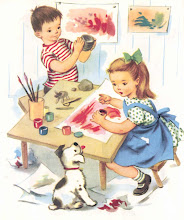
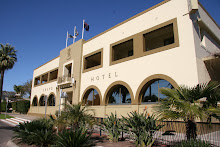
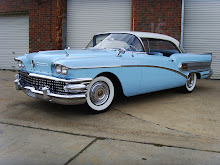





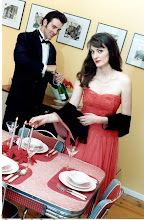












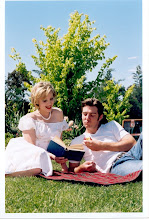
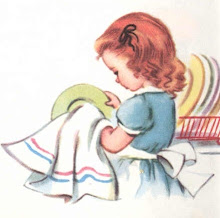































I love hydrangeas! What a beautiful post, the photos are stunning. I'd never seen pink hydrangeas before, they are not so common here in WA.
ReplyDeleteRhiannon - I posted this comment to you ages ago, but have realised that my comments section has been playing up yet again, so am re-posting it for you....a million thankyous for reading and liking my humble little blog too XOXO
DeleteThanks Rhiannon - your comment made me smile, and I have realised that even things we take for granted ( like always having pink hydies - I continually want to change them to blue) are precious and beautiful to others....I will treasure my pink flower heads now !! XOXO
Thanks Rhiannon - your comment made me smile, and I have realised that even things we take for granted ( like always having pink hydies - I continually want to change them to blue) are precious and beautiful to others....I will treasure my pink flower heads now !! XOXO
ReplyDeleteI have a lot of hydrangeas in my garden, one of my favorite flower! I have different shades of pink, some blue and some white. 2 years ago they were so beautiful but last year about no flowers...
ReplyDeleteI think it's really romantic flowers!
They sure are...... there is just something festive about them too. Wow, white ones, I have only ever seen white ones in photographs....do they need any sort of special attention to make them white? Wouldnt white ones make georgous wedding flowers?? !! XOXO
DeleteI am a huge fan of hydrangeas but alas they will not grow here in Vegas. I had no idea they were toxic. My neighbour in Sydney had a garden full.
ReplyDeleteHave you ever tried growing them inside in a pot perhaps? They go ok as indoor plants........XOXO
DeleteRecently I have noticed how beautiful the hydrangea in my backyard, I was wondering they are blossoming at the moment with blue/purple and pink. But will will they continue blossom next yr February in Australia? I was hoping to use them as a decoration for a friends church wedding. Can please help me?
ReplyDeleteHi! Usually hydrangeas bloom around Christmas time in Australia (Late December early Jan) but if you choose to leave the blooms on the bush, they can fade to some quite pretty colours in feburary....muted greens and bronzes. It will all depend on what colours your friend is after......will the wedding be in Melbourne? There are some great florists who may be able to help out with pink/blue blooms at that time of year.......I would love to see some photographs of the wedding when it comes off :) Happy Christmas to you! XX
Delete